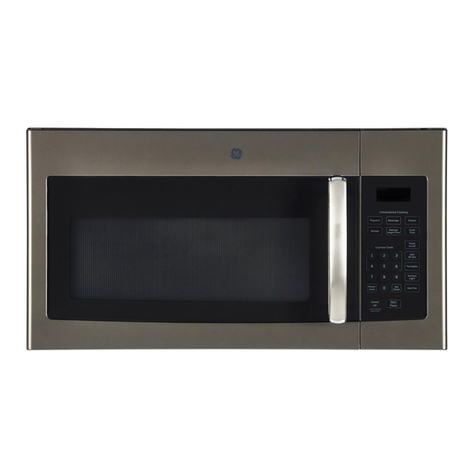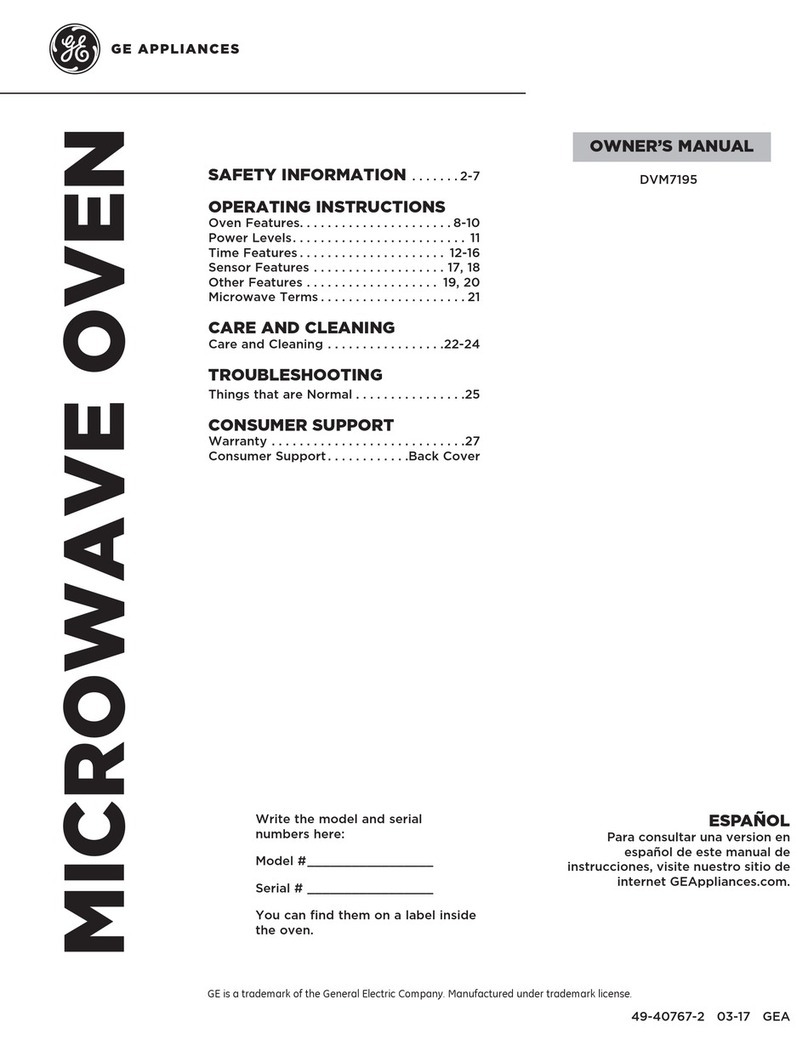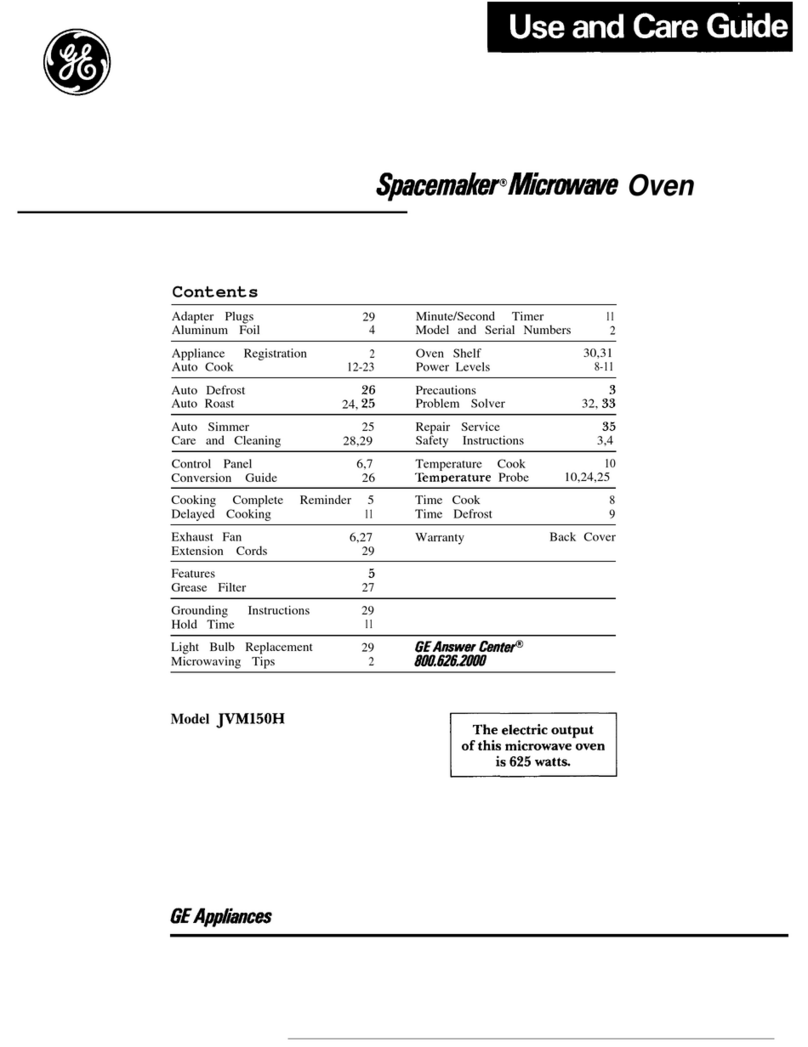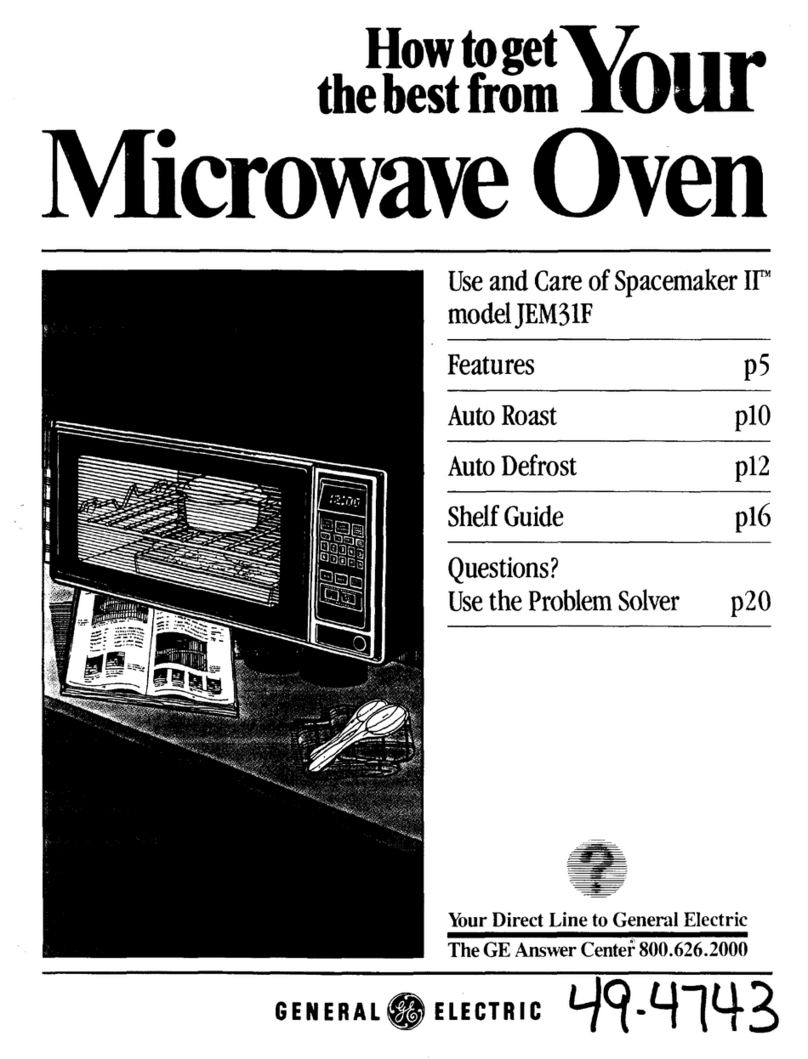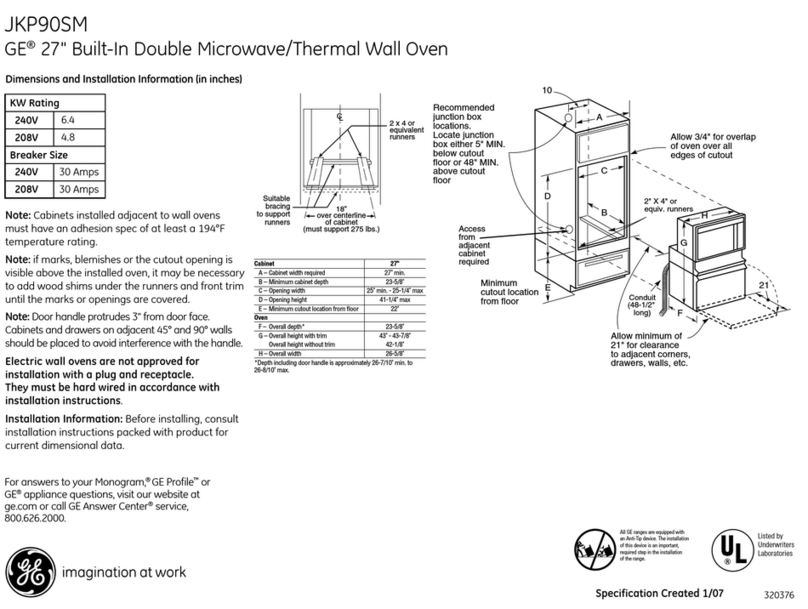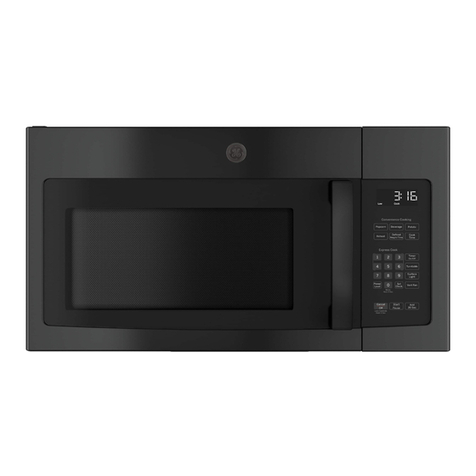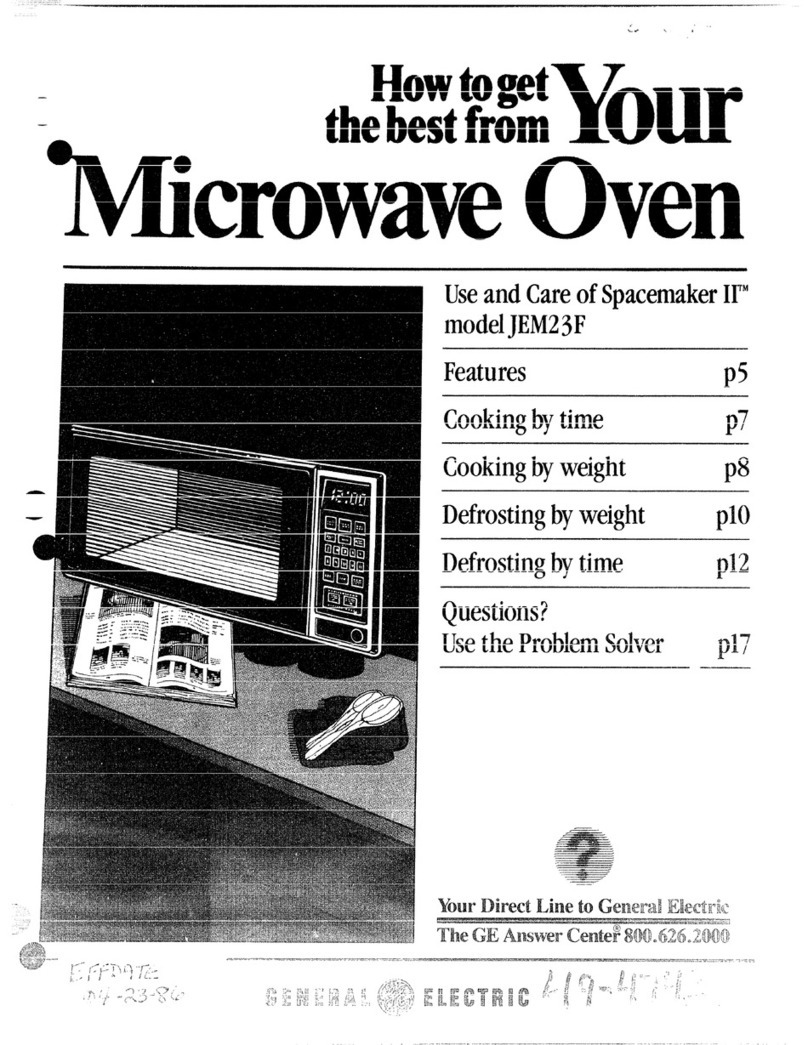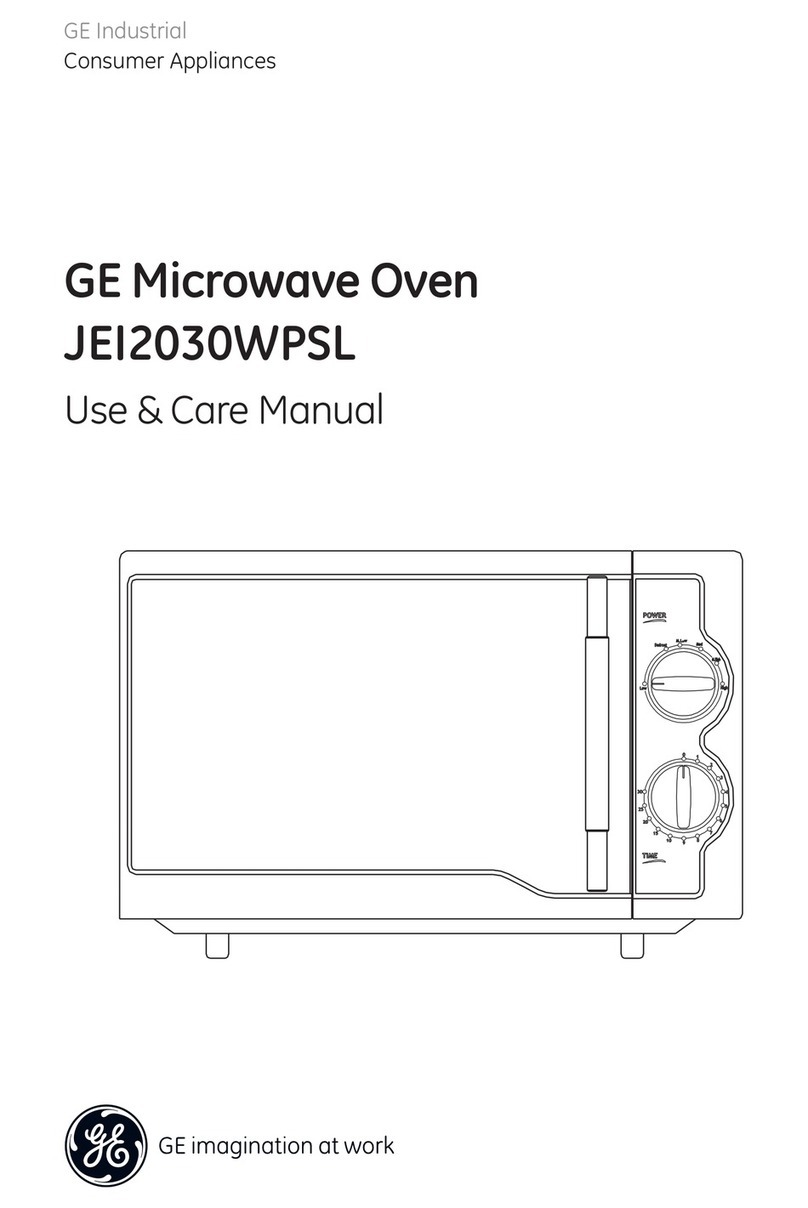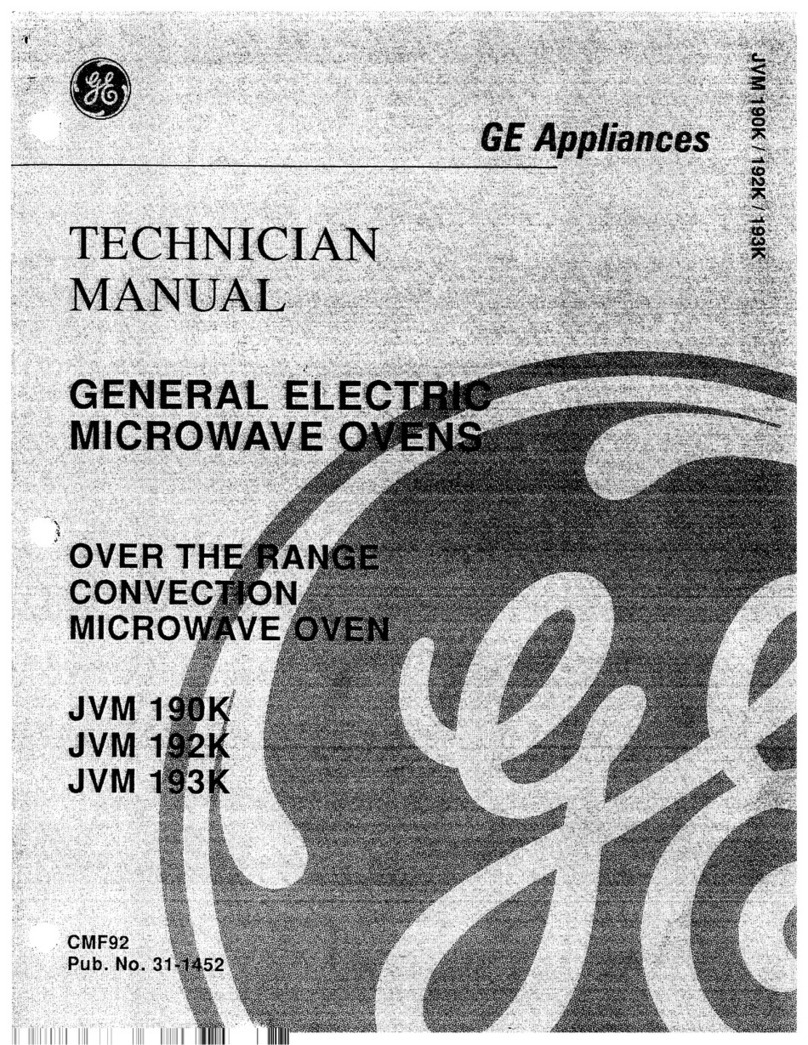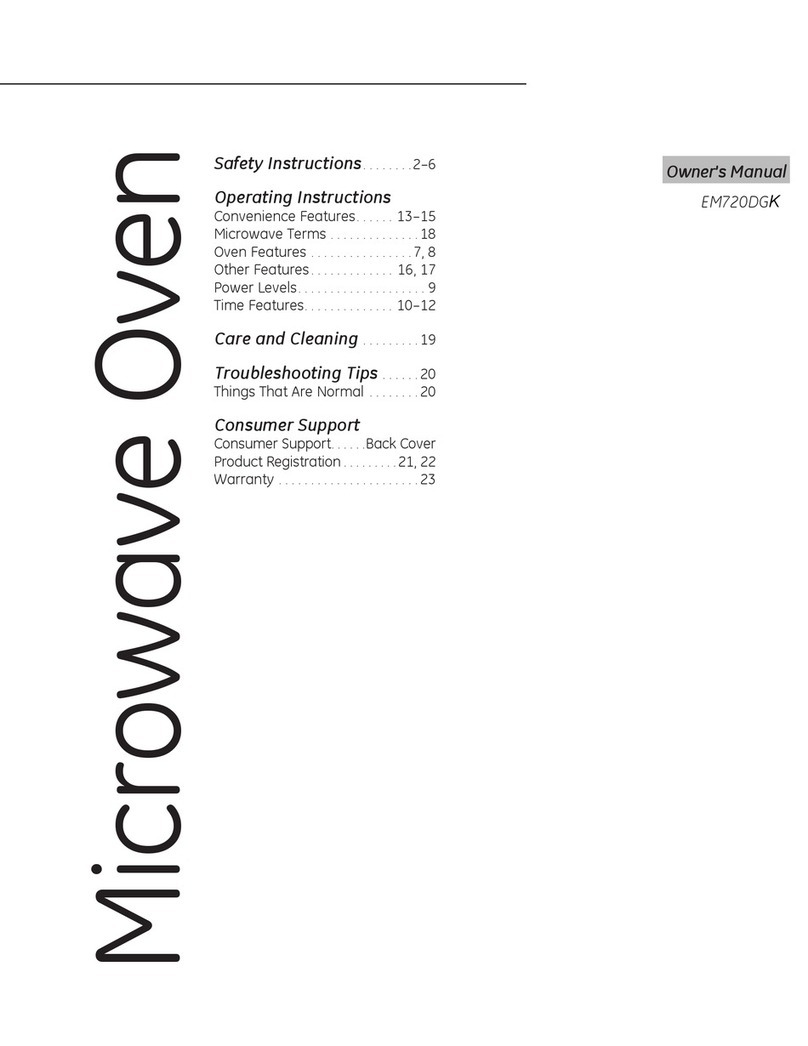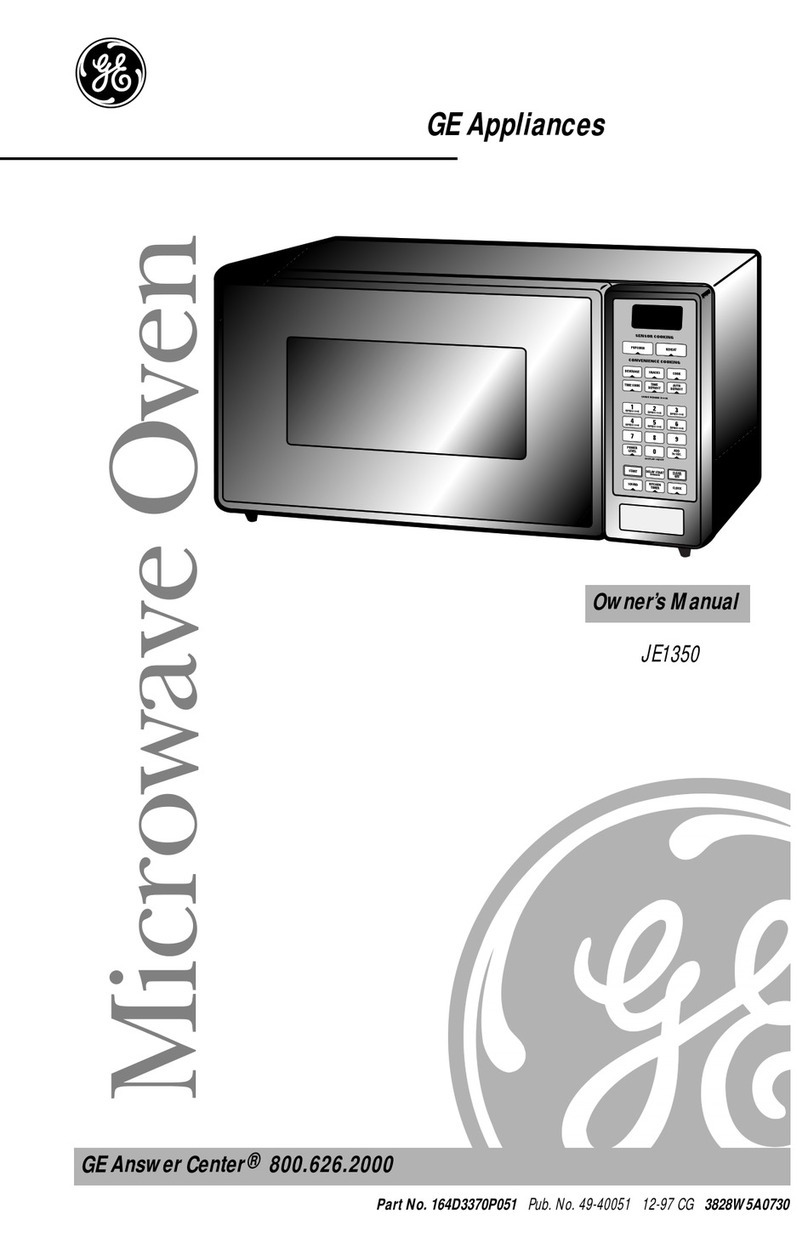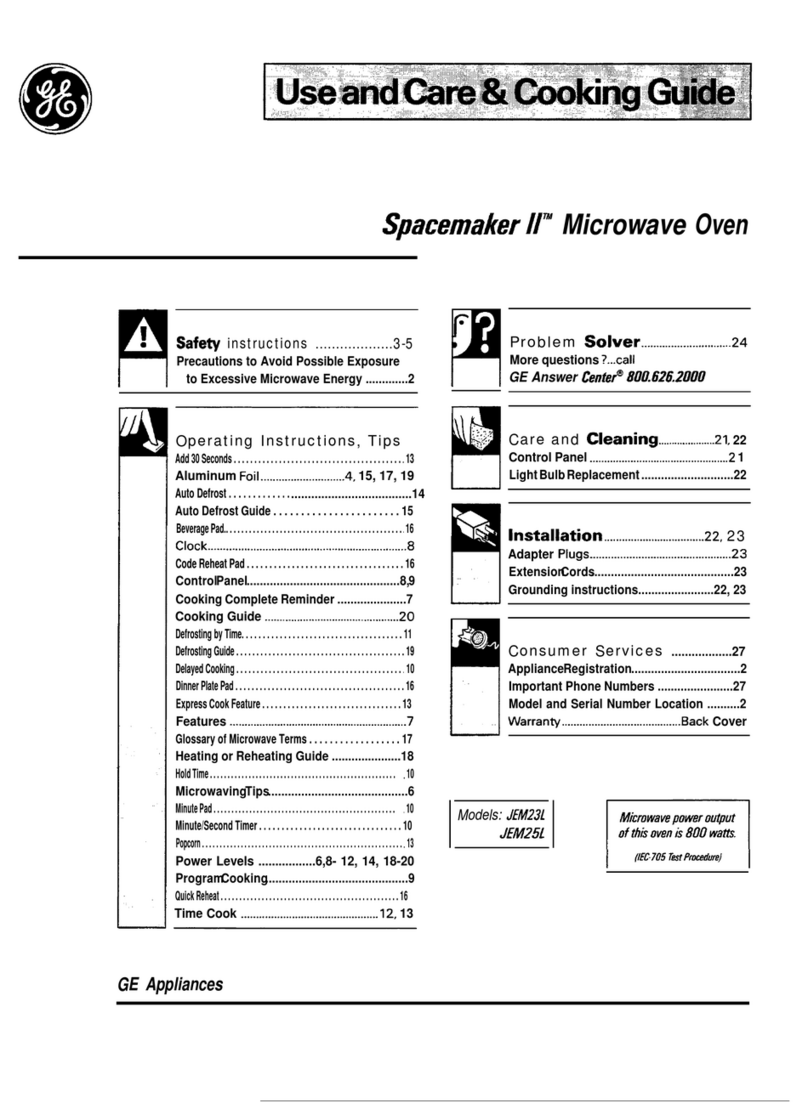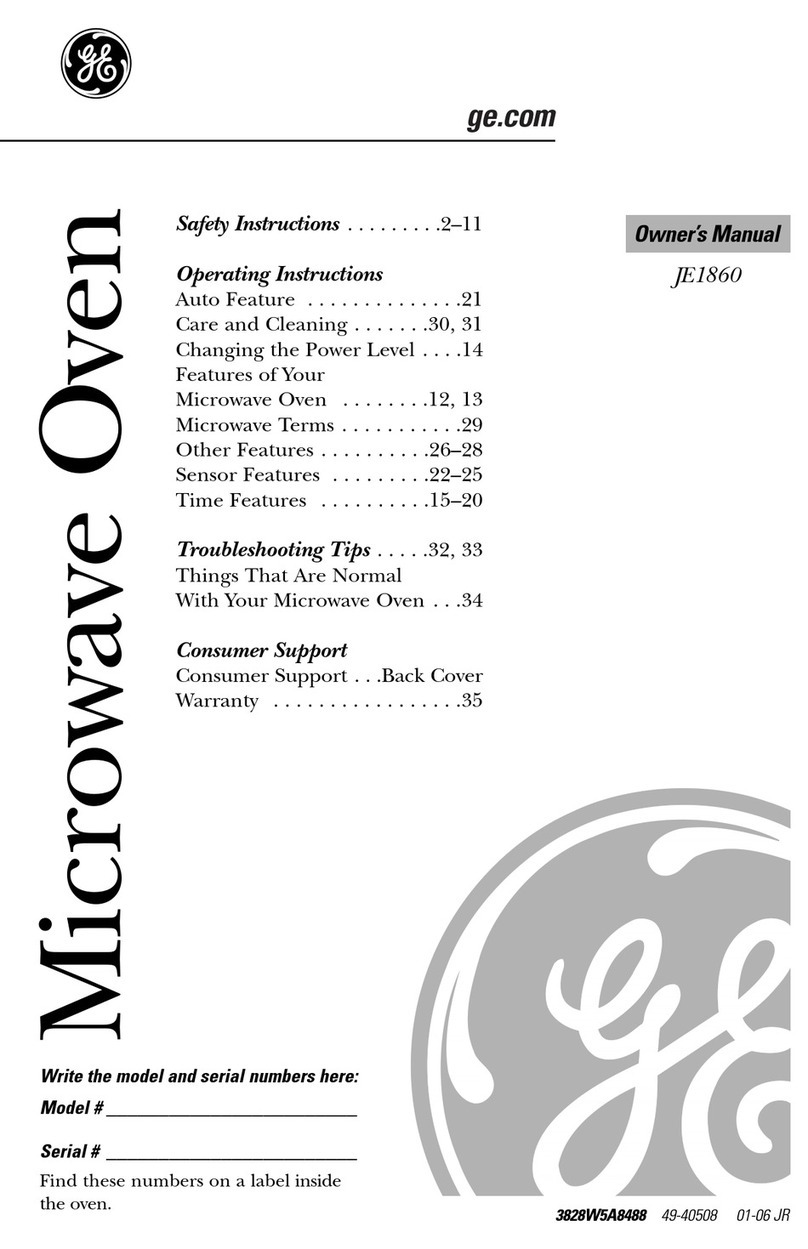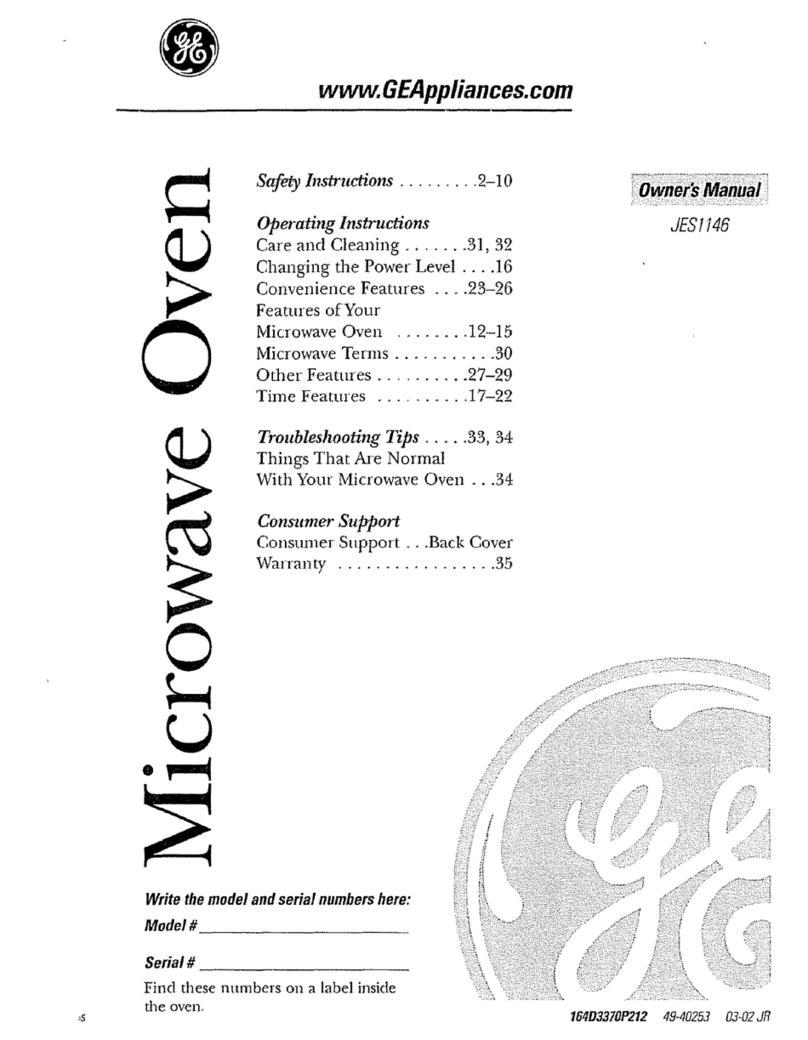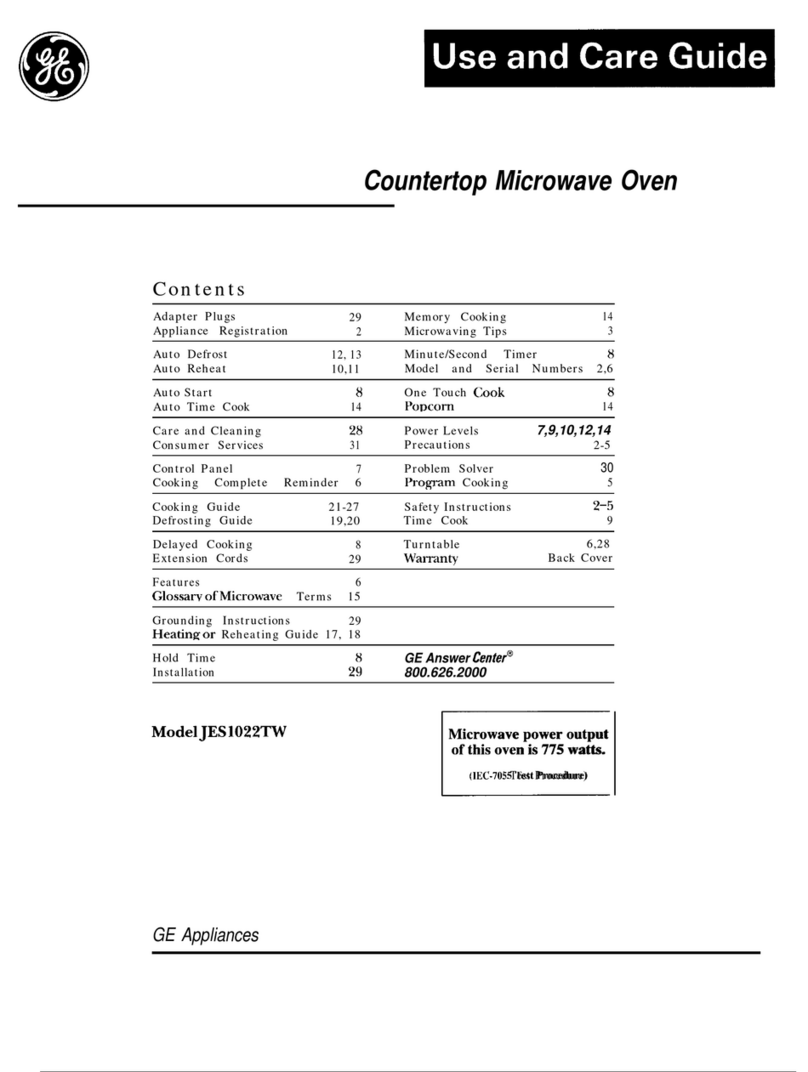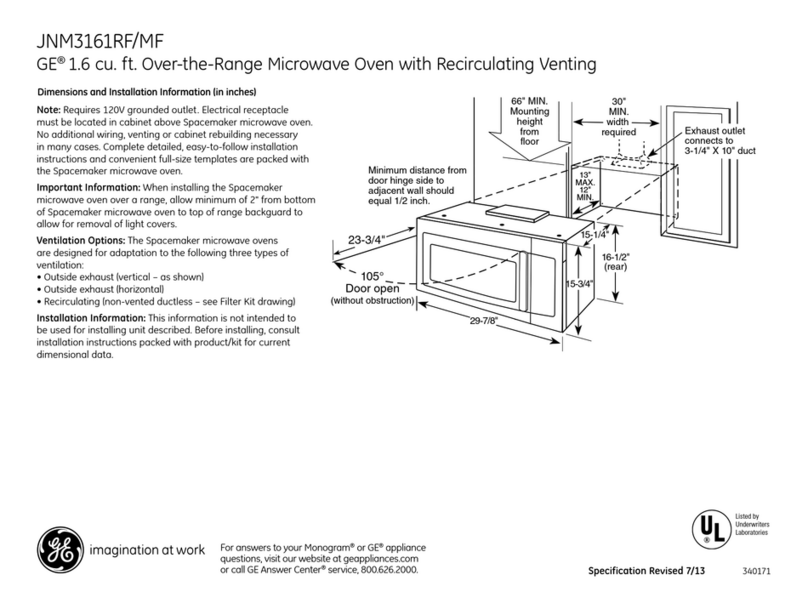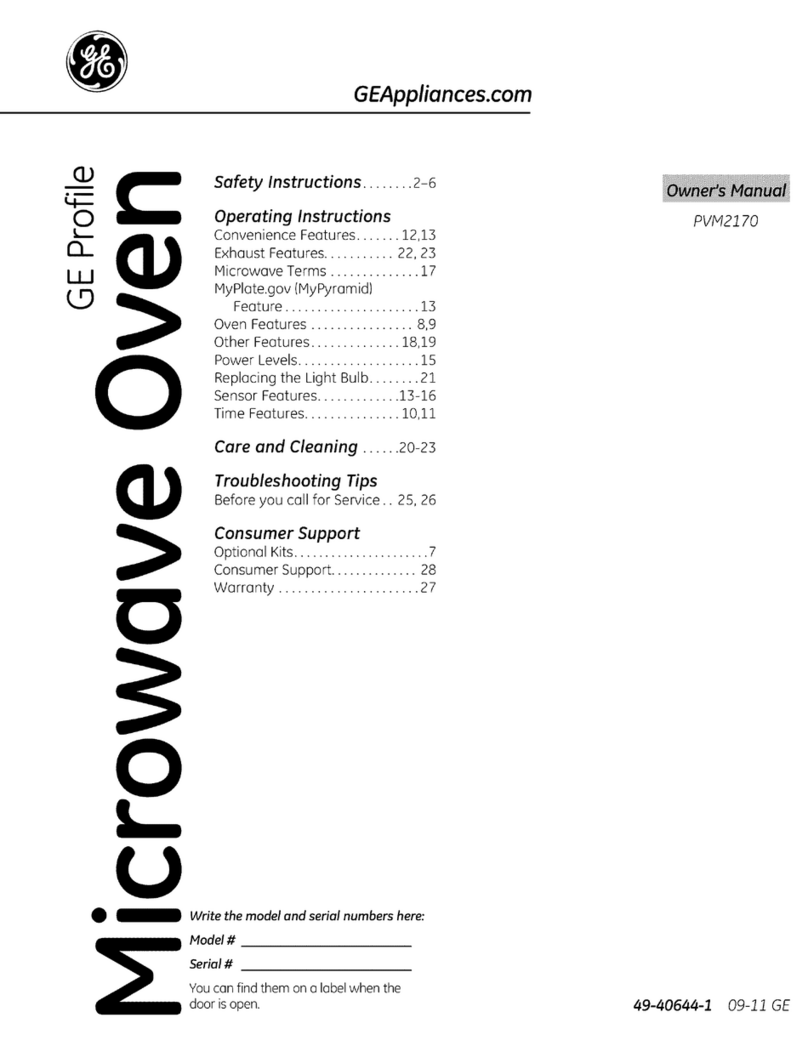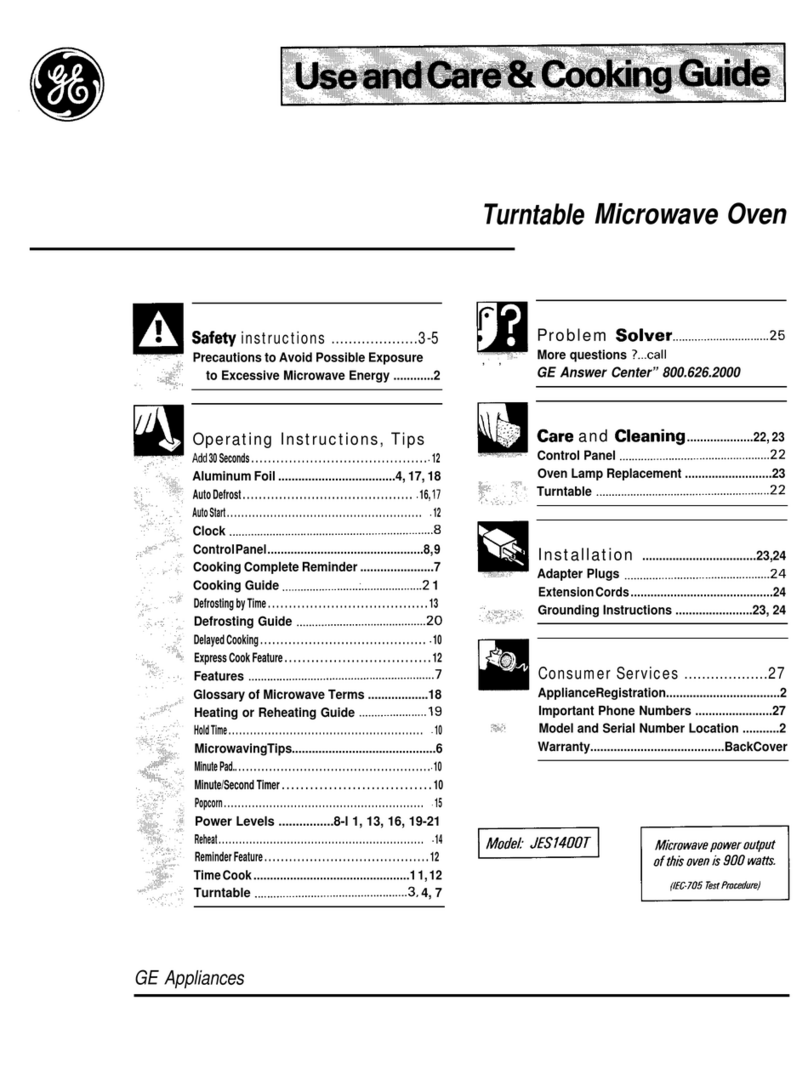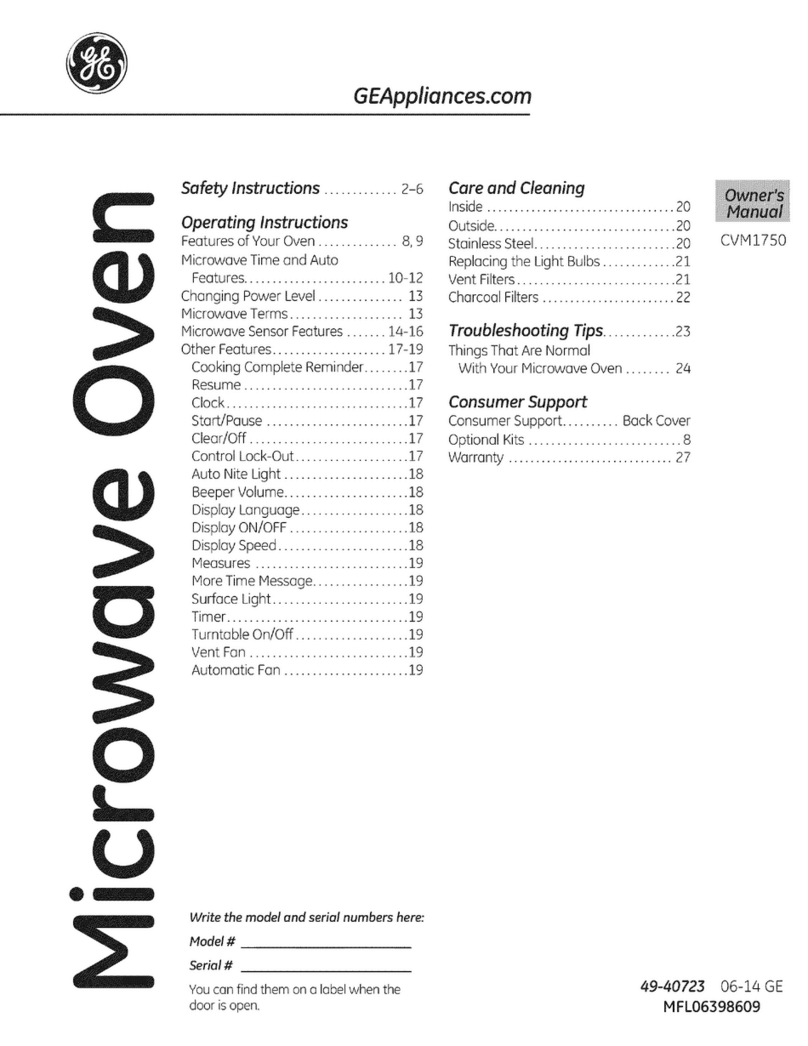
4
IMPORTANT SAFETY INFORMATION.
READ ALL INSTRUCTIONS BEFORE USING.
Make sure all cookware used in your microwave oven is
suitable for microwaving. Most glass casseroles, cooking dishes,
measuring cups, custard cups, pottery or china dinnerware
which does not have metallic trim or glaze with a metallic
sheen can be used. Some cookware is labeled “suitable for
microwaving.”
If you are not sure if a dish is microwave-safe, use this test:
Place in the oven both the dish you are testing and a glass
measuring cup filled with 1 cup (240 mL) of water³set the
measuring cup either in or next to the dish. Microwave 3
0–45 seconds at high. If the dish heats, it should not be used
for microwaving.
If the dish remains cool and only the water in the cup heats,
then the dish is microwave-safe.
If you use a meat thermometer while cooking, make sure it is
safe for use in microwave ovens.
Do not use recycled paper products. Recycled paper towels,
napkins and waxed paper can contain metal flecks which
may cause arcing or ignite. Paper products containing nylon
or nylon filaments should be avoided, as they may also ignite.
Some foam trays (like those that meat is packaged on)
have a thin strip of metal embedded in the bottom. When
microwaved, the metal can burn the floor of the oven or
ignite a paper towel.
Do not use the microwave to dry newspapers.
Not all plastic wrap is suitable for use in microwave ovens.
Check the package for proper use.
Paper towels, waxed paper and plastic wrap can be used
to cover dishes in order to retain moisture and prevent
spattering. Be sure to vent plastic wrap so steam can escape.
Cookware may become hot because of heat transferred
from the heated food. Pot holders may be needed to handle
the cookware.
“Boilable” cooking pouches and tightly closed plastic bags
should be slit, pierced or vented as directed by package. If
they are not, plastic could burst during or immediately after
cooking, possibly resulting in injury. Also, plastic storage
containers should be at least partially uncovered because
they form a tight seal. When cooking with containers tightly
covered with plastic wrap, remove covering carefully and
direct steam away from hands and face.
Use foil only as directed in this guide. TV dinners may be
microwaved in foil trays less than 3/4" (1.9 cm) high; remove
the top foil cover and return the tray to the box. When using
foil in the microwave oven, keep the foil at least 1” (2.5 cm)
away from the sides of the oven.
Plastic cookware³Plastic cookware designed for microwave
cooking is very useful, but should be used carefully.
Even microwave-safe plastic may not be as tolerant of
overcooking conditions as are glass or ceramic materials
and may soften or char if subjected to short periods of
overcooking. In longer exposures to overcooking, the food
and cookware could ignite.
Follow these guidelines:
1. Use microwave-safe plastics only and use them in
strict compliance with the cookware manufacturer’s
recommendations.
2. Do not microwave empty containers.
3. Do not permit children to use plastic cookware without
complete supervision.
WARNING!
SAVE THESE INSTRUCTIONS
THE VENT FAN
The fan will operate automatically under certain conditions (see
Automatic Fan feature). Take care to prevent the starting and
spreading of accidental cooking fires while the vent fan is in use.
Clean the underside of the microwave often.
Do not allow grease to build up on the microwave or the fan
filters.
In the event of a grease fire on the surface units below the
microwave oven, smother a flaming pan on the surface unit
by covering the pan completely with a lid, a cookie sheet or a
flat tray.
Use care when cleaning the vent fan filters. Corrosive
cleaning agents, such as lye-based oven cleaners, may
damage the filters.
When preparing flaming foods under the microwave, turn the
fan on.
Never leave surface units beneath your microwave oven
unattended at high heat settings. Boilovers cause smoking
and greasy spillovers that may ignite and spread if the
microwave vent fan is operating. To minimize automatic fan
operation, use adequate sized cookware and use high heat
on surface units only when necessary.
